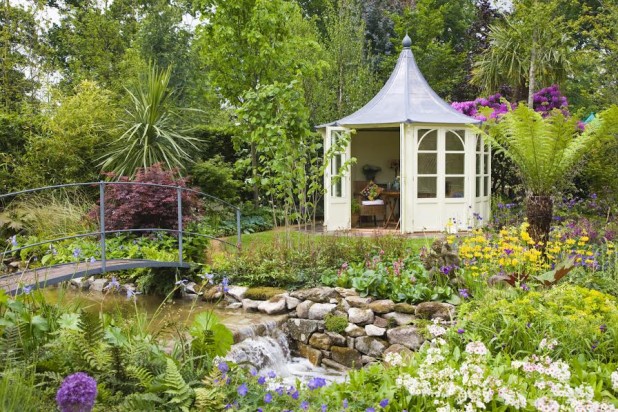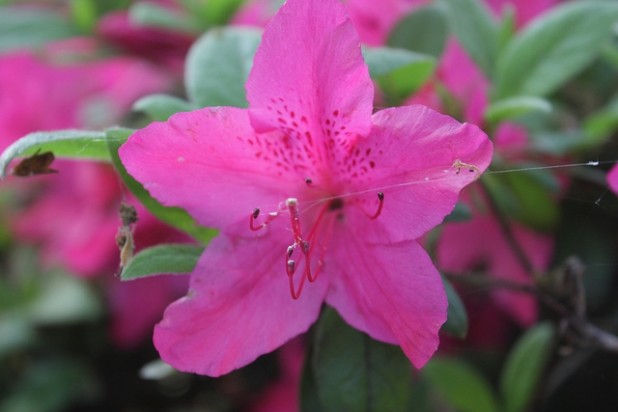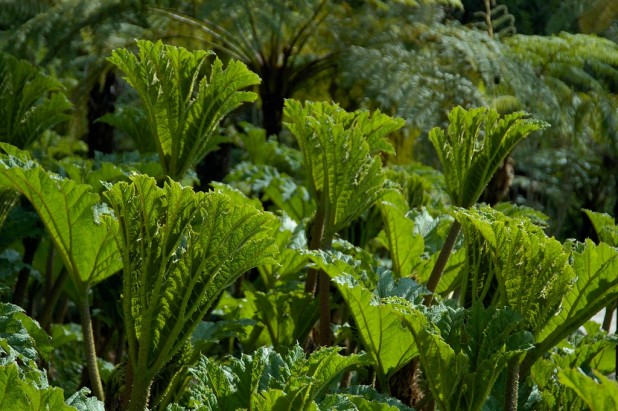It’s Time To Fight Invasive Alien Species
Do you know what an Invasive Alien Species (IAS) is? No? I shouldn’t worry if you don’t, let me explain. IAS are not the little green men from Mars. IAS is flora or fauna from other countries, growing and multiplying on foreign soil. They are brought here by the wind, water, and movement of soil, people and animals. Is this a problem? According to the Convention on Biological Diversity (CBD) it is one of the biggest problems threatening Biodiversity. The CBD states: “Alien species that become invasive are considered to be the main direct drivers of biodiversity loss across the globe.”
According to Regulations of the European Parliament: “The threat to biodiversity and related ecosystem services that invasive alien species pose takes different forms, including severe impacts on native species and the structure and functioning of ecosystems through the alteration of habitats, predation, competition, the transmission of diseases, the replacement of native species throughout a significant proportion of range and through genetic effects by hybridisation. Furthermore, invasive alien species can also have a significant adverse impact on human health and the economy. Only live specimens, and parts that can reproduce, represent a threat to biodiversity and related ecosystem services, human health or the economy.”
IAS are not only threatening Biodiversity but it is bad for the economy (costing Ireland’s economy €202,894,406 per) and causes health, social and ecological problems. It has been estimated that these threats and impacts due to the presence of IAS amounts to 5% of the European economy, €12.7 billion each year. Because of the seriousness of the current problem, legal obligations have been put in place in all EU states in order to control IAS.
Most countries host wildlife from other parts of the world. Animals and plants are taken from their natural habitats and introduced to wildlife parks, zoos, parks and gardens, but also travel here by air and water. Sometimes this will work out and no damage is done to the natural habitat, but IAS is species specifically, that threatens biological diversity and ecosystem services.
How is IAS classified? They are micro-organisms, fungi, plant or animal. They also tend to grow faster than indigenous plants or animals. They are very adaptable to new environments and conditions; survives on various food types and have an ability to spread over distances, making it very difficult to control growth and reproduction.
The Draft on Invasive Alien Species discusses the reasons why IAS needs to be controlled and eradicated and is suggesting a plan to counterattack this problem. In bigger countries there are plenty of predators, diseases and competitors that can eliminate IAS, but on small islands like Ireland, it becomes almost virtually impossible to achieve this, because there are not enough strong competitors or predators to fight them out of the ecosystem.
Dublin City Council’s plan to control IAS is called ‘The Draft Invasive Alien Plan for Dublin City 2016 – 2020’ and is available for public viewing until the 12th February 2016 at the Civic Offices at Wood Quay. “The impacts of Invasive Alien Species in terms of degradation of our environment and damage to economic interests necessitate that we recognise Invasive Alien species management as a key issue for the sustainable development of Dublin. The fact that Dublin Bay recently achieved UNESCO Biosphere status makes it all the more imperative that Invasive Alien Species are given high priority as they are a real and increasing threat to our City and biodiversity,” Assistant Chief Executive Brendan Kenny said.
Dublin Bay was recently awarded Biodiversity status by UNESCO. Dublin Bay includes North Bull Island and adjacent land and parts of Dublin City. The Dublin Bay Biosphere Reserve is well known for its sand dune systems and other protected species. Sea Buckthorn and Common Cord grass Sward, both Invasive Alien Species, have been recorded on North Bull Island.
Invasive Alien Species spreads at a more rapid speed than other alien plants or animals and needs more than conventional environmental resource management. The Draft has put objectives forward to help achieve this goal and will be involving a variety of public bodies and organisations. Last year the Dublin Biodiversity Action Plan 2015-2020 was launched and the Draft Invasive Alien Species Action Plan is an action of this plan. The Draft consists of realistic targets and objectives.
Seven targets have been suggested to promote awareness of the issues at hand, reduce the long term economic cost, protect the native species and habitats against IAS, comply with National and EU legislation, encourage cooperation between public authorities, look after Dublin City’s residents and tourists by improving the present amenities and recreational areas, and to protect public spaces and the health of citizens.
A national assessment report will be prepared for June 2019, to be reviewed in 2020. On the 1st January 2015 Regulation (EU) No 1142/2014 of the European Parliament and of the Council of 22 October 2014 on the Prevention and Management of the Introduction and Spread of Invasive Alien Species was put in place in Strasbourg. The Regulation defines ‘alien species’ as: (1) any live specimen of a species, subspecies or lower tax on of animals, plants, fungi or microorganisms introduced outside its natural range; it includes any part, gametes, seeds, eggs or propagules of such species, as well as any hybrids, varieties or breeds that might survive and subsequently reproduce; (2) an alien species whose introduction or spread has been found to threaten or adversely impact upon biodiversity and related ecosystem services.
Dublin 8 is the host of one of the biggest enclosed recreational spaces within any European capital city. Phoenix Park stretches over 707 hectares. James Butler, the Duke of Ormond, established Phoenix Park in 1662 on behalf of King Charles II. Today it is also the home of the President of Ireland and enjoyed by many for activities that include running, taking the kids to the zoo and playing Polo.
Broadleaf parkland species of trees such as oak, ash, lime, beech, sycamore and horse chestnut covers 30% of Phoenix Park. There are Fallow Deer (introduced to the environment in the 1660’s by the Duke of Ormond) roaming the grounds to this day. There are a variety of species of mammals and birds in the conservation area; a 9 hectare flower garden, also called The Victorian People’s Garden; and the 28 hectare Dublin Zoo (established in 1831) with over 400 animal species, some of them indigenous to Ireland and others from all around the globe.
In Dublin City itself 17 species of IAS have been recorded. Back in 2012 Roach was detected in the People’s Garden (Phoenix Park). Canadian Waterweed (Elodea Canadensis) was recorded in Phoenix Park in 2009. Also found in the Phoenix Park was Giant Rhubarb (Gunnera Tinctoria) and Nuttall’s Waterweed (Elodea Nuttallii). In Kilmainham in the Dublin 8 area Rhododendron Ponticum and Himalayan Balsam was recorded. In Drimnagh near the Grand Canal Parrot’s Feather (Myriophyllum Aquaticum) was detected.
So what has to be done and what does the Draft suggest? So far it has been decided that official controls at borders of Member States will be carried out starting this month, January 2016. Even though “staff shortages, lack of finance, co-ordination difficulties and fragmentation of land ownership” have been noted as the reasons why programmes to restrict the IAS problem have not worked out, the Draft has set out a group of actions that to be implemented. These actions include:
Continue partnerships of public bodies working on IAS control policy on river catchments.
Continue current projects, e.g. mink control on the Dodder and Sea Buckthorn control at North Bull Island.
Consider scope for student involvement.
Identify the priority areas in which IAS are to be controlled.
Take swift action against species that pose a serious health risk, especially aquatic IAS.
Bio-security Codes of Practice to be used by Council staff, private companies, sports/recreation groups and the public.
Ensure compliance with legislation in development works undertaken by DCC.
Develop work plans for individual species identifying who can perform work in specific areas, (Council staff, contractors, volunteers/community groups).
Develop health and safety procedures for volunteers. Continue publicity at events/displays/talks.
Develop remediation measures for native biodiversity if necessary.
Keep informed about Invasive Species control programmes from Ireland and throughout Europe.
Monitor for presence of other Third Schedule Non-native species.
(http://www.dublincity.ie/sites/default/files/content/Press/Documents/Draft%20Invasive%20Species%20Action%20Plan%202016.pdf )
Research has found that IAS was the cause for the extinction of 40% of animals since the 17th century. Pests that have entered countries like the United Kingdom, the United States, Australia, South Africa, India and Brazil cost those governments over US$ 100 billion. Dublin City Council is asking members of the public to read the draft plan and to make submissions to biodiversity@dublincity.ie or in writing to: Dublin City Council, Biodiversity Unit, Culture Recreation, Amenity and community Department, Block 4, Ground Floor, civic Offices, Wood Quay, Dublin 8 by Friday the 12th February 2016.











